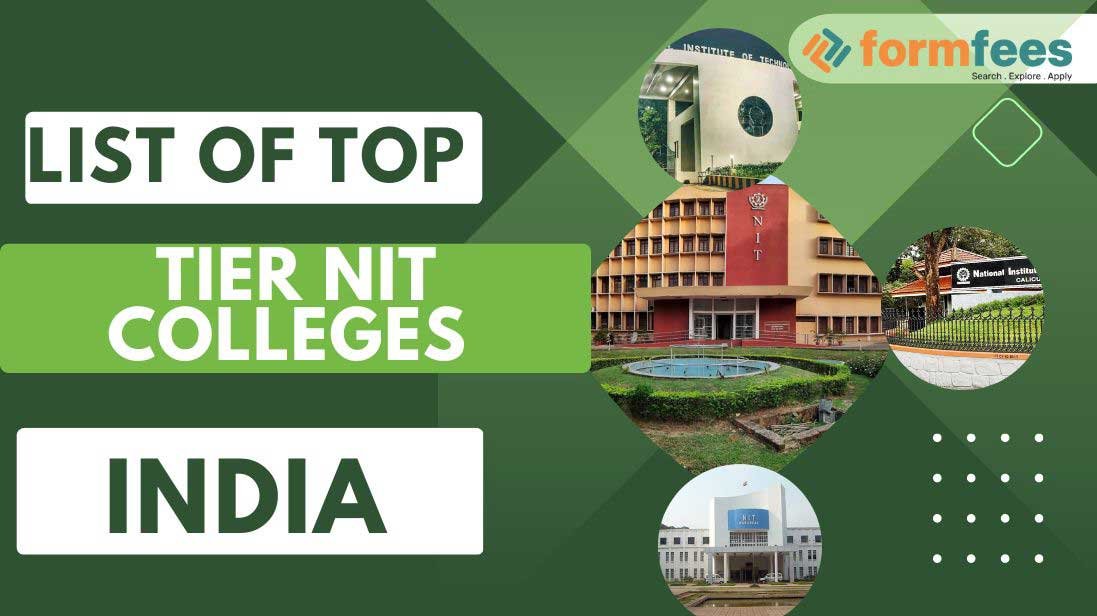Table of Contents
An Online GMAT™ to Support Business School Goals The GMAT™ online exam is a remotely proctored version of the test center-based GMAT™ exam designed to help candidates achieve their application goals from the comfort of their own homes.
Candidates have the option of taking the GMAT™ exam online, at a testing center, or both! The GMAT™ online test gives candidates even more choice and flexibility to do their best on test day and confidently meet their business school goals.
The GMAT™ online exam is further aligned with the Test Center exam with the following additional features:
- Assessment of Analytical Writing (AWA).
- Demonstrate writing and critical thinking skills by adding the Analytical Writing Assessment (AWA) section.
- Choose the order of the exam sections.
- Candidates can choose the order of the sections in which they take the exam. optional pauses.
- Candidates can take two breaks to prepare for the next section of the exam.
- Check out the unofficial score right away.
- Unofficial results will be displayed on the screen after the exam is complete to help you plan your next steps.
- Make appointments for the GMAT™ test online up to 6 months in advance.
- Candidates are offered dates for the GMAT™ online exam every 6 months.
GMAT™ Online Exam Structure
The GMAT™ online exam measures the verbal, quantitative, integrated reasoning, and critical thinking skills most relevant to a business college education.
Integrated Thinking: Measures the ability to analyze data and evaluate information presented in multiple formats.
Quantitative Reasoning: Measures the ability to analyze data and draw conclusions using reasoning skills.
Verbal Reasoning: Measures the ability to read and understand written material, evaluate arguments, and correct written material to conform to Standard Written English
Analytical Writing Assessment: measures the ability to think critically and communicate ideas. Each section contains the same number of questions and time per section as the current test center-based GMAT™ exam.
The sections are as follows:
- 31 Quantitative Reasoning/ 62 Minutes
- 36 Verbal Reasoning/
- 65 minutes 12 Integrated Reasoning/ 30 minutes
- 1 Analytical Writing Assessment/ 30 minutes
Analytical Writing, Integrated Thinking, Quantitative, Verbal Assessment Verbal, Quantitative, Integrated Thinking, Analytical Writing Assessment Quantitative, Verbal, Integrated Thinking, Analytical Writing Assessment preferences. Learn more about choosing the order of the exam sections.
Total Exam Time
Total exam time is 3 hours and 7 minutes, not including two optional 8-minute breaks. See the GMAT™ Location-Specific Pricing page for rates and fees at candidate locations.
The GMAT™ online delivery exam includes 5 free score reports that candidates must submit to us within 48 hours of receiving their official score. Candidates may reschedule their exam date at any time before the scheduled exam time for a fee.
Cancellation fees for the online GMAT™ test are based on prior notification of cancellation.
Scoring
To allow for comparability, the GMAT™ online test will have the same type and number of items and segment times as the test administered in testing centers. They also use the same grading algorithm and grading scale for the section ratings and overall ratings, like the test center-based version.
Candidates can preview their total, quantitative, verbal, and unofficial IR scores at the end of the exam. The official results report is made available to candidates through their MBA.com account within 7 business days (although in some cases results may take up to 20 business days to be processed).
When candidates receive their official score report, they will see each section’s grade as well as their overall grade for the exam.
Candidates can also see their score percentiles in their score reports. Online GMAT™ exam results are valid for 5 years and count toward candidates' 12-month and lifetime GMAT™ limits. Submission of the score.
We've introduced new flexibility with the GMAT™ online test that gives candidates control over when they are ready to submit their scores for programs.
Included in the GMAT™ online exam fee, candidates have the option to first view their score and then elect to submit their score to select programs.
In addition, candidates can submit 5 free score reports within 48 hours of receiving their official score on their mba.com account. Official results are provided to schools within 24 hours of the candidate’s request.
Online GMAT™ Exam Availability We aim to offer the online GMAT™ exam as an option to support candidates' business goals.
Candidates can schedule an exam appointment online up to 24 hours before an exam slot becomes available. New dates are continuously available. The GMAT™ online test is available in most locations except Mainland China, Cuba, Iran, North Korea, and Sudan due to local privacy and regulatory requirements
Please note that tutoring support for the GMAT™ online exam is currently only available in English.
The GMAT™ online test can be taken on Windows and Mac PCs and laptops. Find out more about the specific system requirements here. at the candidate's location are open and feel safe entering a testing center's facilities, candidates are encouraged to do so. We strictly follow local government guidelines to ensure the health and safety of our test takers and
test center staff.
Enhanced safety, distancing and hygiene practices are in place at all of our currently open testing centers.
Test center-based GMAT™ exams are also available. To maximize your candidates' needs, compare which GMAT™ test delivery would help candidates achieve their business school goals.
GMAT Syllabus
The Graduate Management Admissions Council (GMAC) administers the GMAT, also known as the Graduate Management Admission Test, which assesses a candidate's verbal, analytical, and math skills for admission to some of the top MBA programs in the world.
The GMAT is one of the most important tests when considering pursuing an MBA abroad as it provides a platform for MBA applicants to enroll in a variety of management programs. The test is divided into four discrete, timed sections: the Verbal Reasoning section, the Integrated Reasoning section, and the Analytical Writing assessment. Let us examine in depth each of the elements that make up the GMAT syllabus.
GMAT Syllabus Analytical Writing Assessment 2023
The GMAT exam Syllabus Analytical Writing Assessment tests your critical skills as well as your ability to articulate ideas through a specific argument.
Here you are expected to write an opinion or a personal analysis of the argument. This 30-minute section covers a variety of topics of general interest, including economics, business, and related disciplines. Specialist knowledge is not required, instead analytical skills and
The ability to articulate ideas clearly is highly valued. Argumentative Essay Before presenting your case, you should review the logic in this section. the argument is valid and does not make unjustified assumptions.
Prioritize grammar and syntax while supporting or refuting the criticism raised in the question. Essay on topic for this part you have to write an essay on the topic given to you.
The participant has to explain his point of view in about 600 words. Candidates can express their thoughts or those who agree with the given statement.
However, make sure to present your point of view in a well-organized manner, as this will form the basis of your review.
2023 GMAT Syllabus: Integrated Reasoning Section
The Integrated Reasoning section of the GMAT syllabus also measures data comprehension skills such as B.
How to integrate information to create strong and meaningful judgments in favor of the company. In this part, you must combine information already present in various
images, words, and statistics.
You must also evaluate data from various sources, examine the relationships between two or more factors, and answer a series of problems.
The following types of questions may appear in the GMAT's built-in reasoning section
Information is made available to you in the form of infographics, numbers, and/or text passages. You must evaluate the data, choose the correct answers to the associated multiple-choice questions, find any inconsistencies in the sources, analyze the data, and draw conclusions.
Two-Part Analysis This subsection of the GMAT syllabus tests your ability to solve complicated problems, recognize relationships, solve equations, etc. through verbal and quantitative forms of questions. The two-part analysis can handle a significant amount of material due to its adaptability.
Graphic Interpretation You should review questions presented as graphs such as bar charts, pie charts, statistical curves, X-Y charts, scatter plots, etc., conclude the data provided, and then answer the questions. with these prints.
2023 GMAT Syllabus: Integrated Reasoning Section
The Integrated Reasoning section of the GMAT syllabus measures data understanding skills and how you integrate information to create meaningful and meaningful judgments on behalf of the organization.
In this part, you must combine information already present in different pictures, words, and statistics. They must also evaluate data from a variety of sources, examine relationships between two or more factors, and answer a series of problems.
The following types of questions may appear in the Integrated Reasoning section of the GMAT. Table Analysis, These queries test applicants' ability to decipher and classify information provided in a table or spreadsheet and to identify relevant information.
Multisource Reasoning, Provides information in the form of infographics, Figures, and/or scriptures.
You must analyze the data, choose the correct answers to the associated multiple-choice questions, find any inconsistencies in the data sources, and draw conclusions.
Two-Part Analysis This subsection of the GMAT syllabus tests your ability to solve complex problems, make connections, solve equations, etc. through verbal and quantitative questions. The two-part analysis can handle a significant amount of material due to its adaptability. Graphic Interpretation.
You should review questions presented as graphs such as bar charts, pie charts, statistical curves, X-Y charts, scatter plots, etc., draw conclusions from the data provided, and then answer the questions based on those conclusions.
GMAT Syllabus 2023 - Quantitative Reasoning Section
The GMAT Quantitative Reasoning section, which focuses on mathematics, will test your ability to solve complicated problems, mathematical reasoning, and graph interpretation.
The quantitative component includes questions about inequality, time and distance, percentages, probability, and other topics.
The questions fall into two categories: problem-solving and data sufficiency.
Problem-Solving Questions To successfully answer multiple choice questions in these question types, you must be rational and analytical. Data-sufficient data interpretation skills are tested in this area of the GMAT syllabus.
You will be asked to use the two statements and use your math and analytical skills to determine whether the statement contains enough data to answer the question.
GMAT Verbal/Grammar Syllabus
The following are some of the topics that you may find in the GMAT Verbal portion. They usually revolve around basic grammar rules.
Basic sentence structure: nouns, pronouns, adjectives, tense idioms, and idioms pronoun agreement subject-verb agreement modifiers parallelism
Phrases and Clauses Articles Part of Speech Direct and Indirect from Active to Passive
You can also check out the following articles to broaden your horizons for the Verbal GMAT: Grammar Mistakes to Avoid GMAT Sentence Correction 10 Ways to Develop Reading Habits Expand Your Vocabulary Toolkit
Frequently Asked Questions GMAT Exam Syllabus 2023
Q. Can you retake the GMAT?
Ans. You may retake the GMAT if you do not achieve the required score the first time. However, you can only take the exam a total of eight times and only five times in a calendar year and must wait 16 days between attempts.
Once you get the perfect 800, you will have to wait five years to retake the exam.
Q. How long should you wait to get your results?
Ans. Immediately after your GMAT exam, you will see a score preview with four of your five scores (quantitative, verbal, integrated reasoning, and total score). You have two minutes to accept or cancel. If you accept them, you will receive a paper copy of your unofficial score report.
This gives you an indication of performance but cannot be used for applications. Your official score report will be available within 7 business days.
Conclusion
Although the GMAT syllabus can be extensive, the time required is very limited. The AWA part and the IR part are not concept-intensive but require practice.
Therefore, the GMAT concept development focuses on the verbal part and the quantitative part.
The GMAT syllabus is a good starting point for the initial planning of your GMAT preparation strategy.
You can prepare for the GMAT in as little as a month, although it requires extreme dedication and consistency that you show in terms of preparation strategy.
It is also important to prepare for the GMAT video interview along with preparing for the test. It will help you build confidence while strengthening your multiple verbal skills.


















